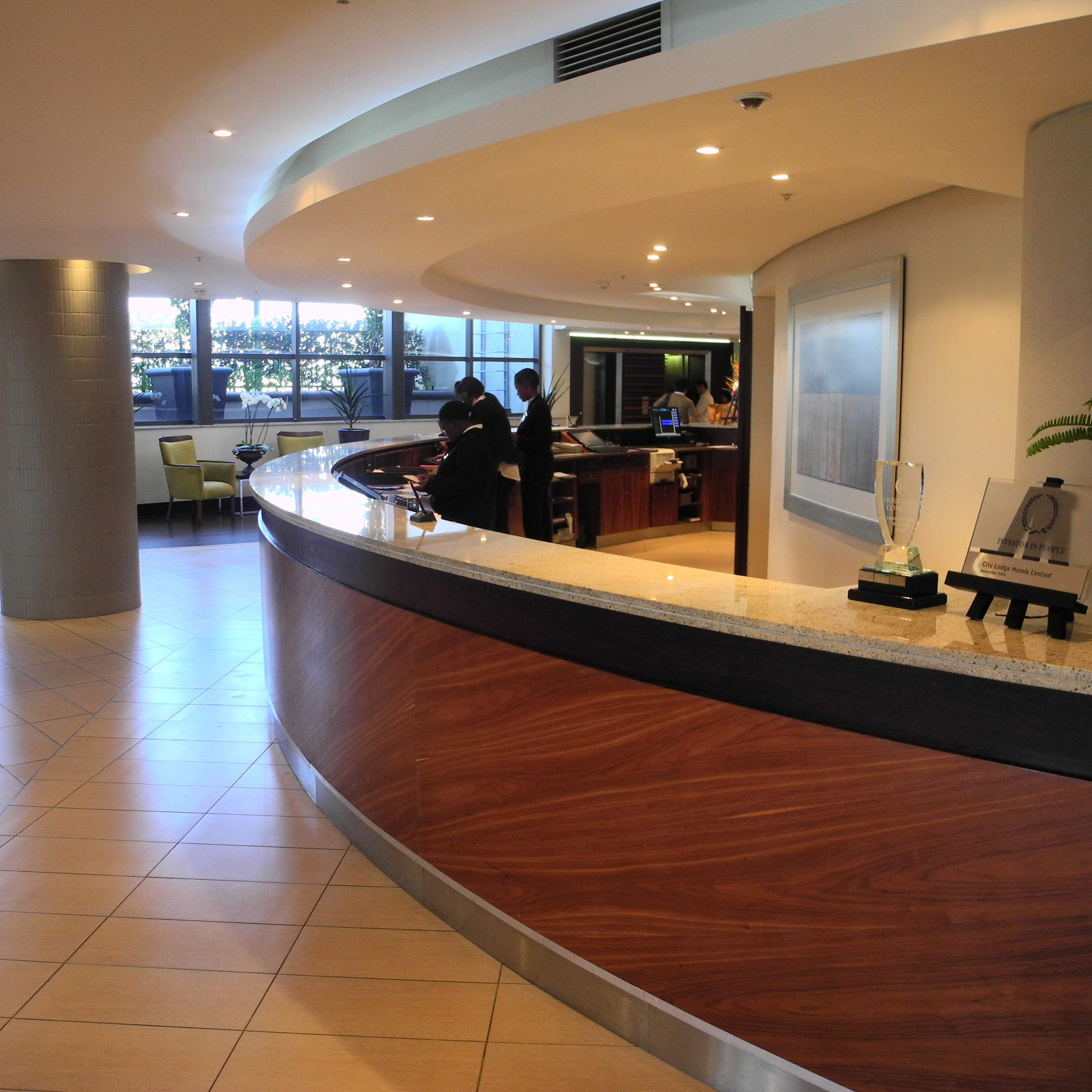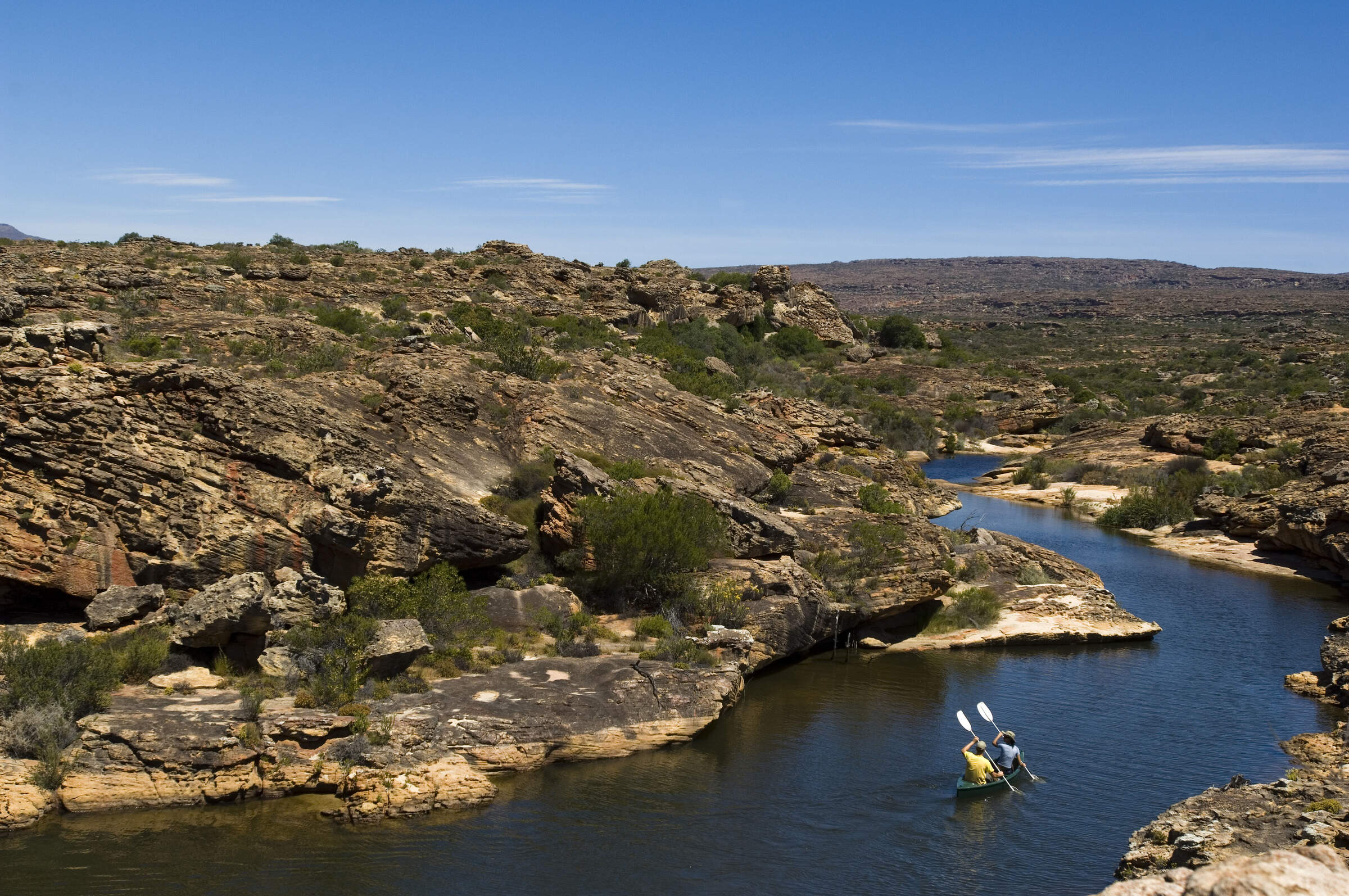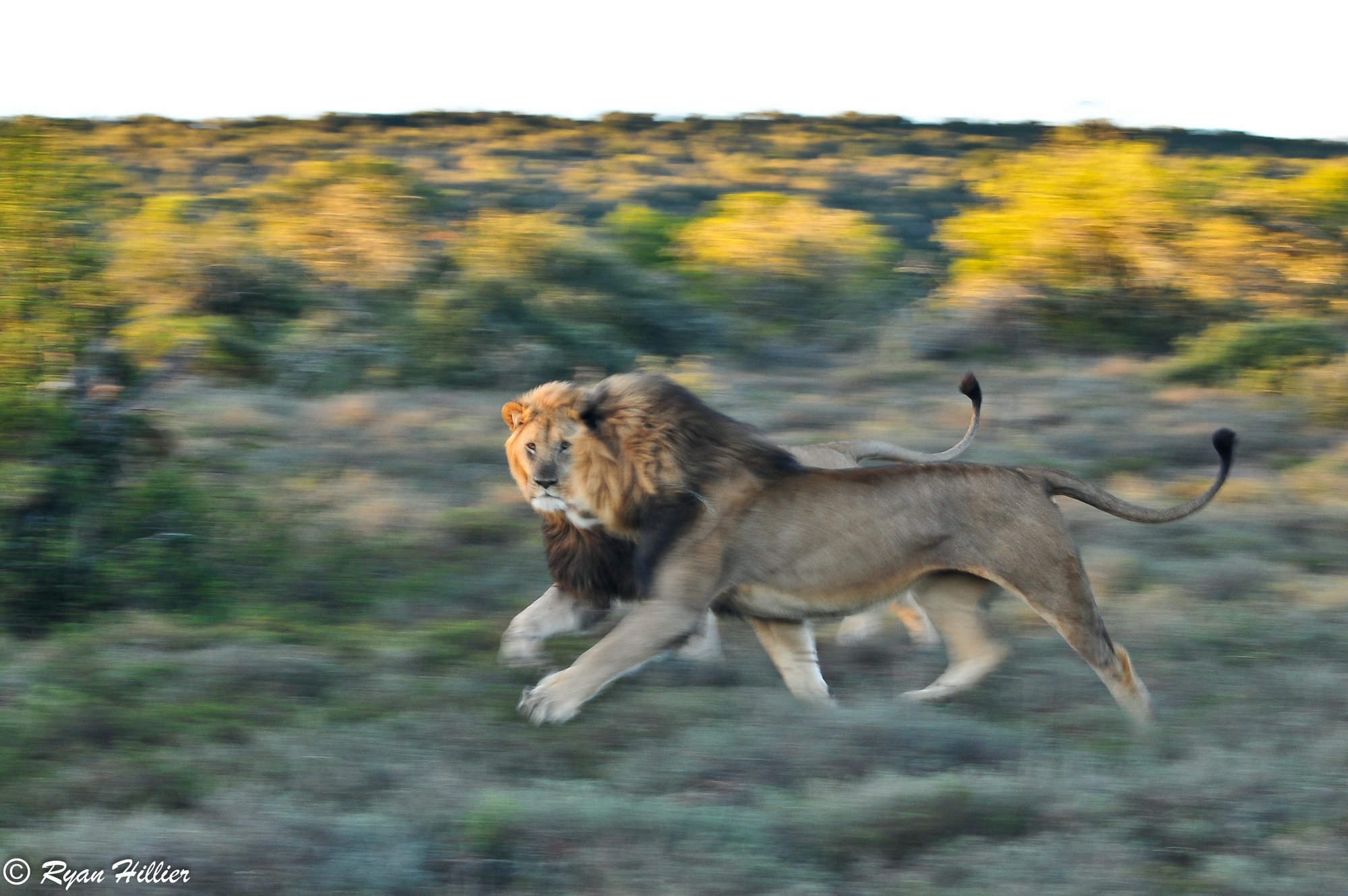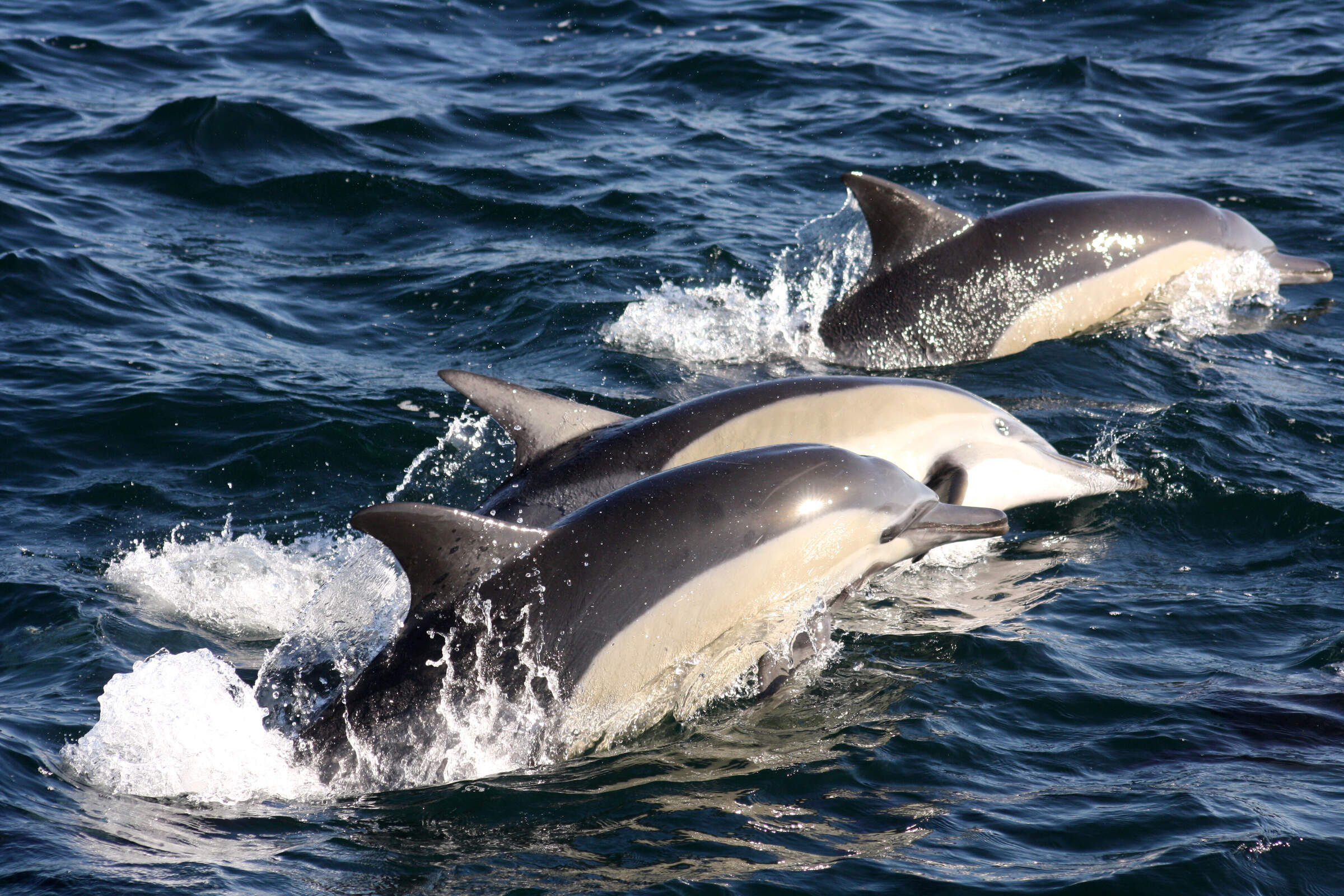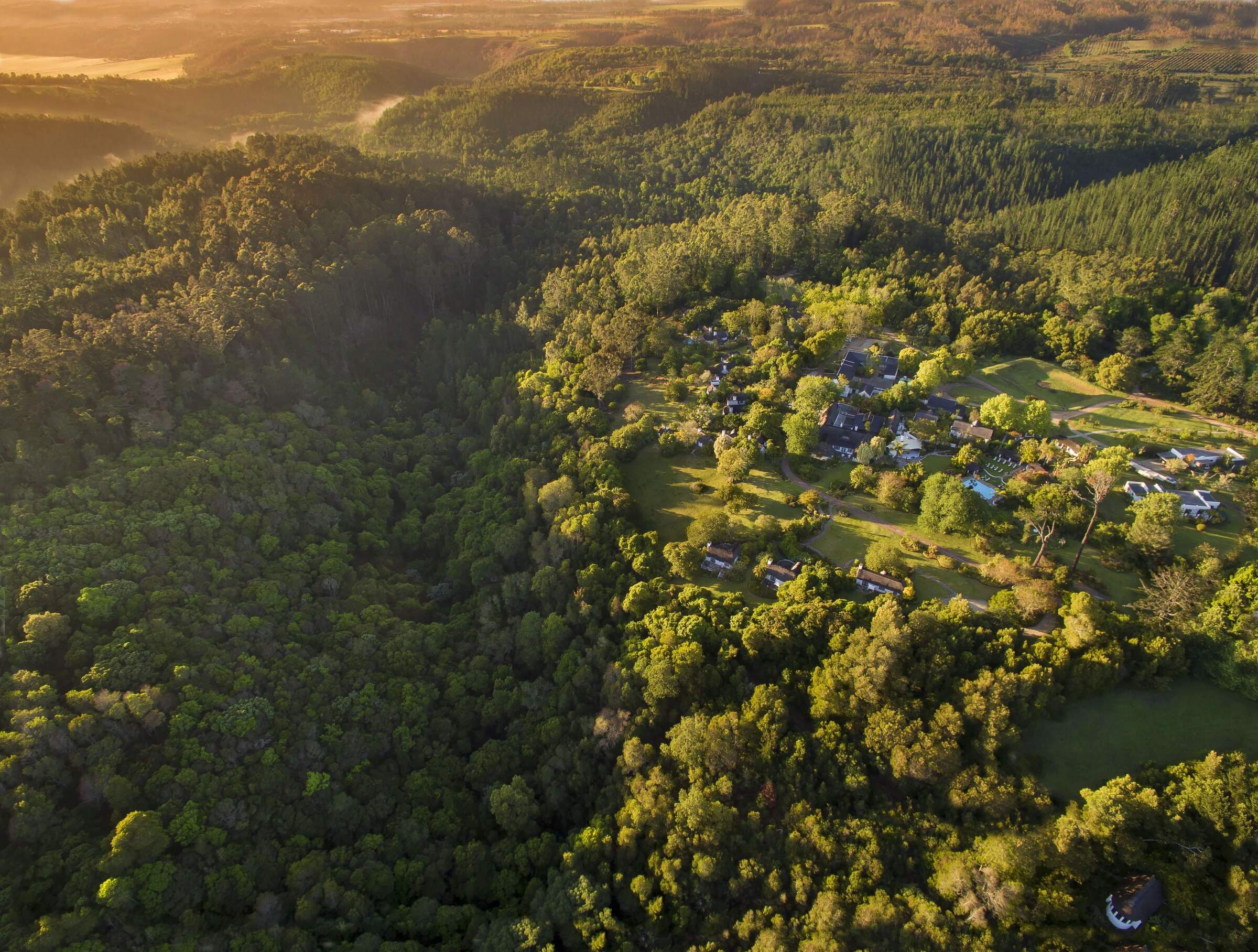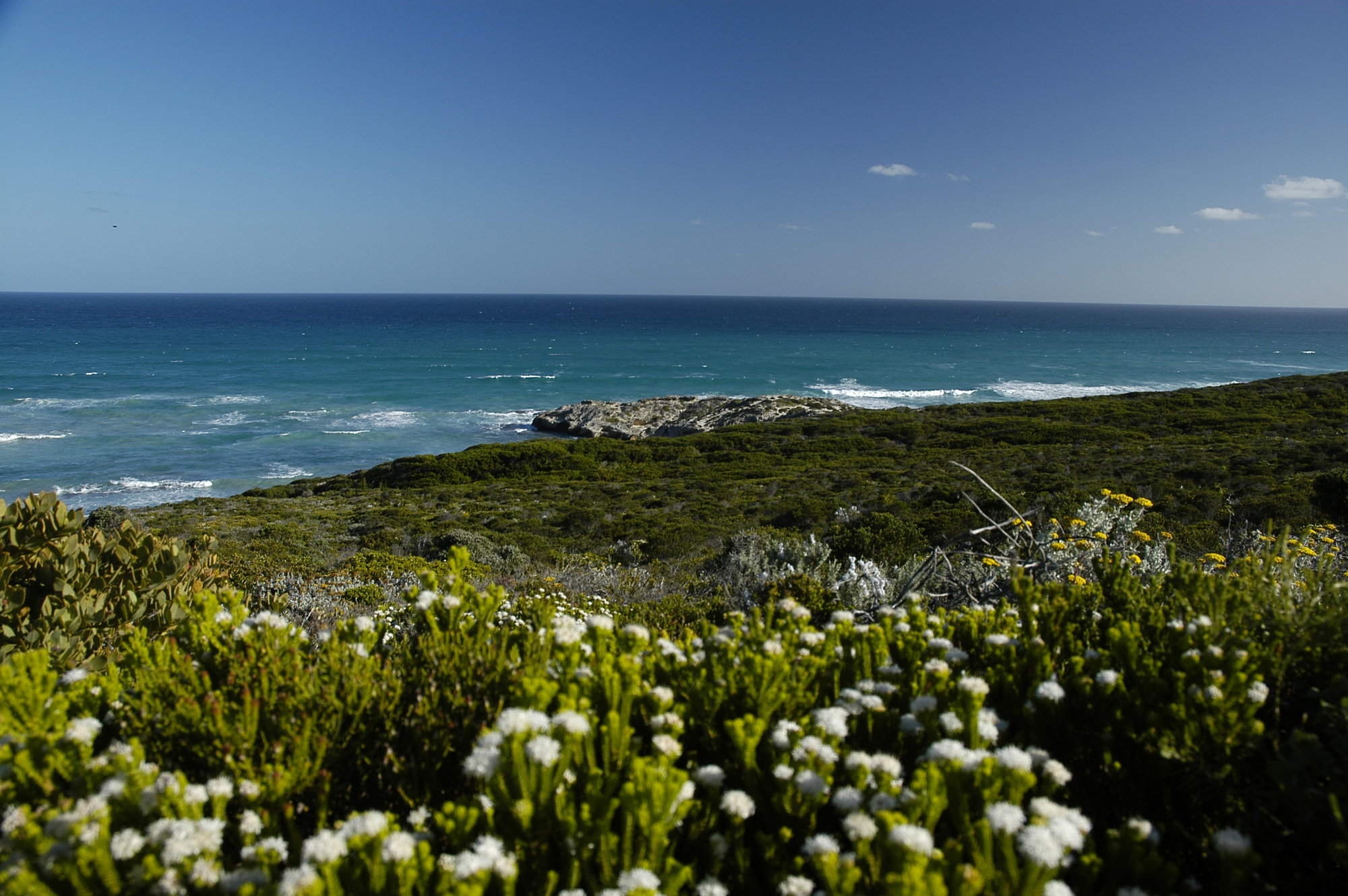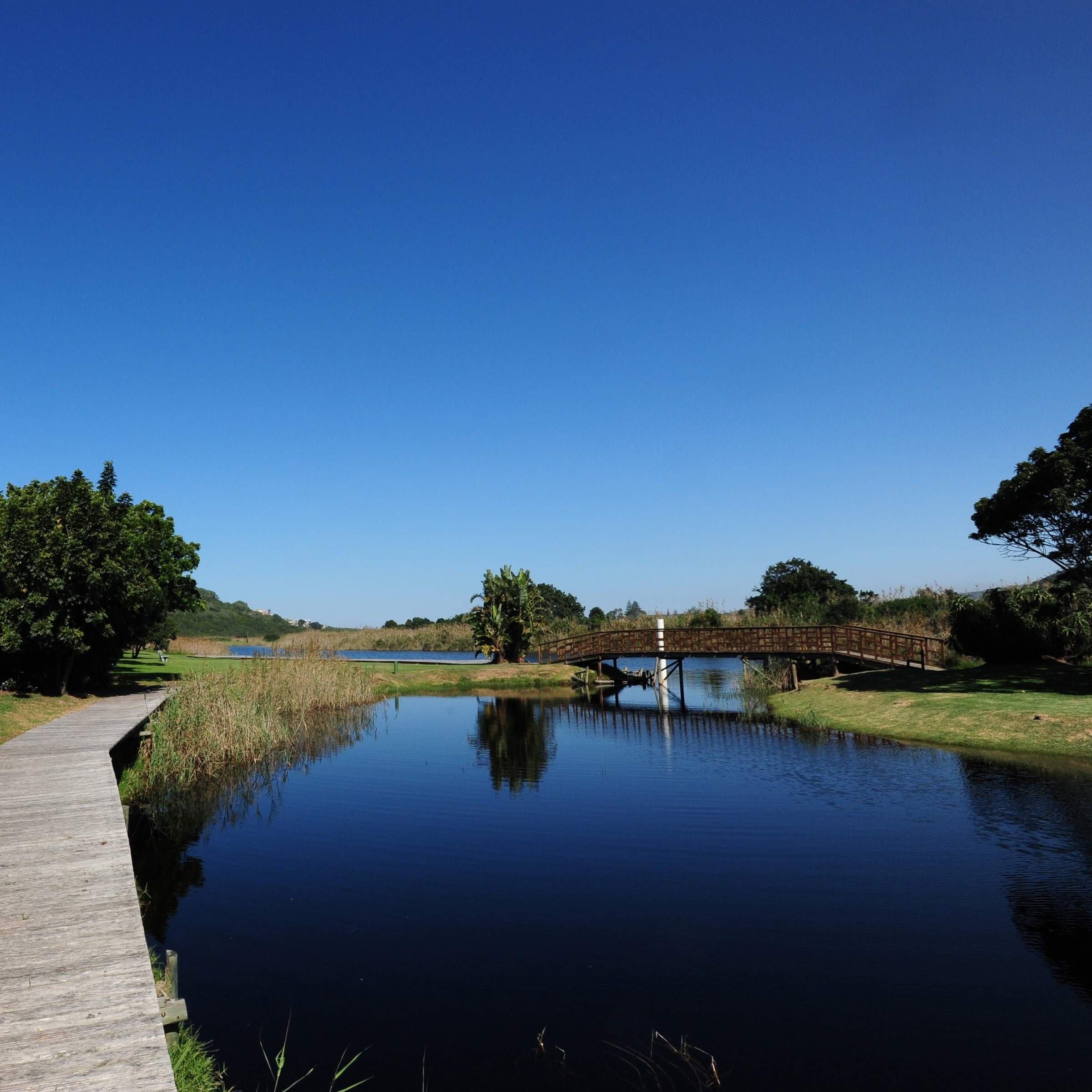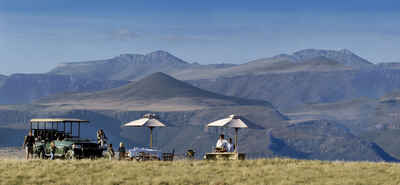
The Samara Karoo Reserve lies on the edge of the Sneeuberg mountain range.
Samara Karoo Reserve
Samara Karoo Reserve
On the edge of the rugged Sneeuberg mountain range, Samara sits on the sweeping Plains of Camdeboo.
Formerly known as Samara Private Game Reserve, this stylish outpost in the Great Karoo, protected by a natural rock amphitheatre, this shaded farmhouse is a great escape for families seeking luxurious home comforts and a spot of gentle, off-beat game-viewing. Endangered blue cranes are winter-residents, black eagles circle and purposeful secretary birds strut through the grasses; a long-standing cheetah conservation initiative allows for on-foot tracking of these swift cats; and, more recently, the arrival of the ‘Big Five’ - elephant, rhino, buffalo, lion and leopard - has widened the wildlife viewing opportunities.
Beginning as eleven livestock farms in 1997, Samara embarked on an impressive landscape ‘rewilding’ project, gradually returning the overgrazed land to its natural vegetation. With this, wildlife has returned; some, like the Cape Vultures, have come naturally, whilst others, like the black rhino, lion and elephants have been reintroduced after a 100-year absence from the region.
That said, Samara is not about an intense safari experience amid huge herds of game; it’s a vast area where slowing down, soaking up time under big skies and appreciating occasional animal encounters is more in style.
Game drives and walking in the plains are always available, with a few steep, rocky tracks leading up through deeply incised, stream-cut valleys to a flat plateau. Here, occasional dolerite-capped peaks, hardy antelope and herds of Cape Mountain zebra enjoy ‘top-of-the-world’ views across ever-fading ridgelines: a stunning sunset spot. Serious mountain bikers (with their own kit) can tackle the tracks too for an exhilarating ride.
Whether staying in Karoo Lodge’s country-chic suites at the main homestead or in the exclusive use Manor House villa, both offer family-friendly accommodation and beautiful outlooks across plains and mountains. Lantern-lit wilderness dinners, gourmet picnics and mountain-top sundowners are lovely here; special ‘star bed’ sleepouts afford magical stargazing; and a sense of space that restores the soul.

South Africa trips focusing on the Cape
Here are 9 great South Africa trips to inspire you
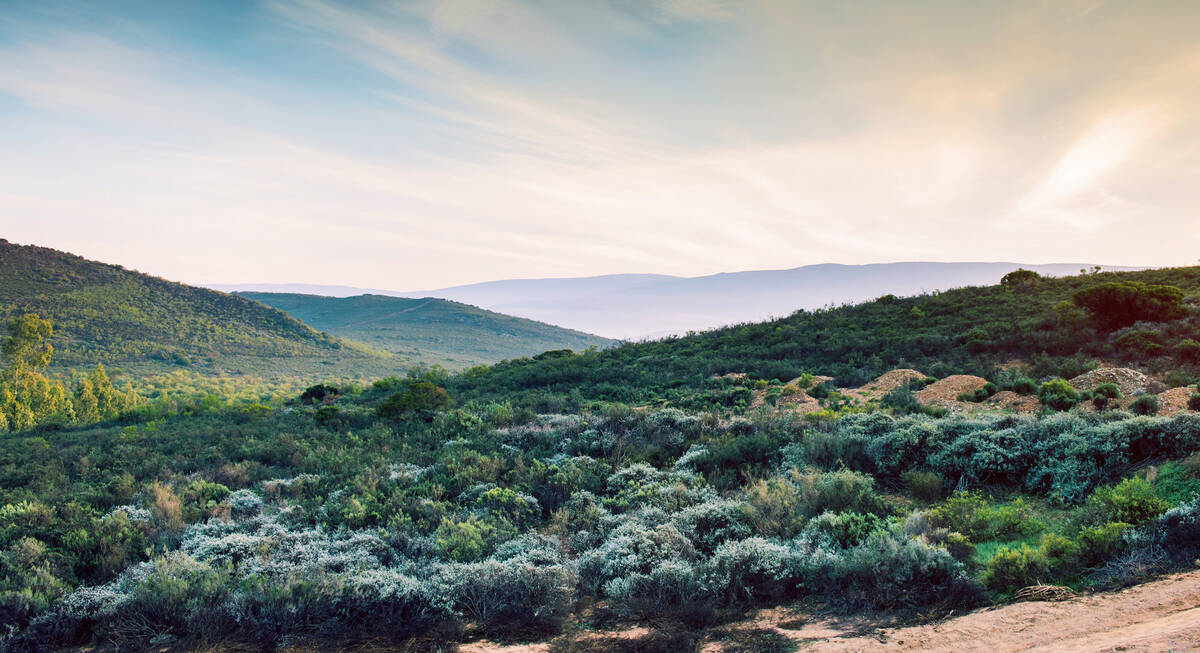
Cape Genet Self-drive Safari
20 days • 8 locations
CAPE TOWN AIRPORT TO CAPE TOWN AIRPORT
Enjoy fine-dining in Cape Town, whale-watching in Hermanus, and a range of walking and water-based activities throughout De Hoop’s Nature Reserve, the Klein Karoo and Plettenberg. This relaxed self-driven safari concludes with stays in The Winelands and Namaqualand.
US$3,550 - US$4,250 per person
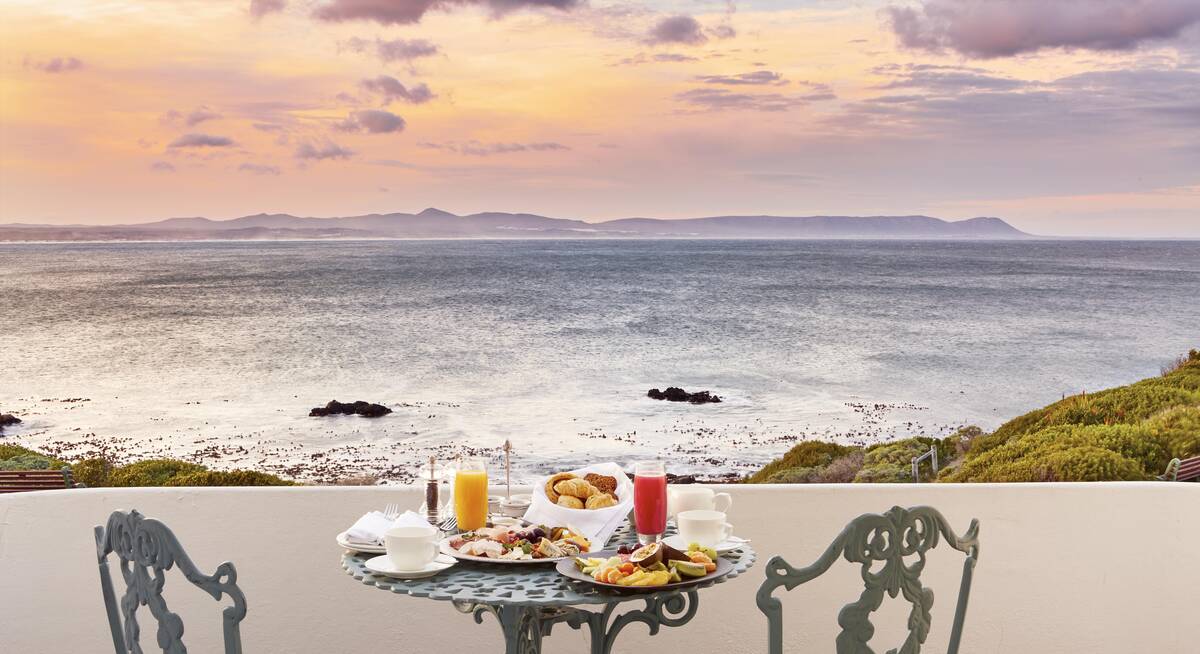
Cape Grysbok Self-drive Safari
20 days • 8 locations
CAPE TOWN AIRPORT TO CAPE TOWN AIRPORT
Explore Cape Town, Hermanus, Franschhoek and Namaqualand, amongst other memorable destinations, during this leisurely self-driven safari. Fine dining, varied activities and impressively comfortable lodges, estates and country houses await.
US$4,680 - US$7,040 per person
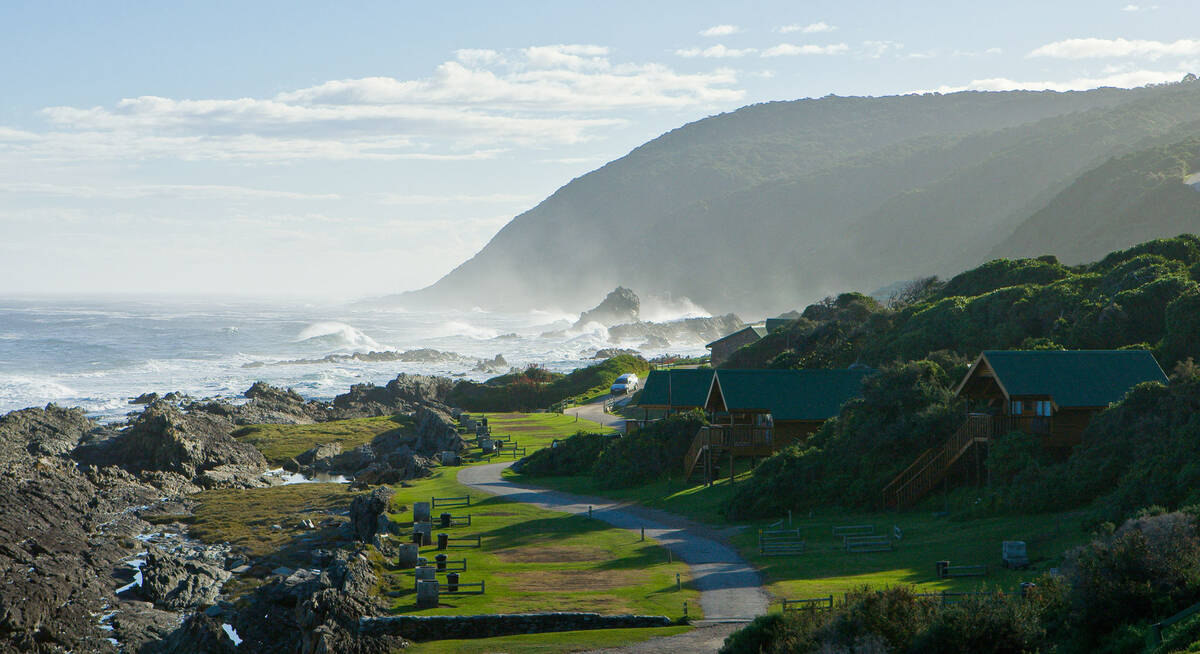
Bontebok Self-drive Safari
12 days • 5 locations
CAPE TOWN AIRPORT TO PORT ELIZABETH AIRPORT
This varied and great-value self-drive trip visits Cape Town, the Winelands and diverse sections of the Garden Route, staying at great places with real local character. It’s ideal for active couples and families who want to explore the Cape’s stunning locations.
US$1,750 - US$1,890 per person
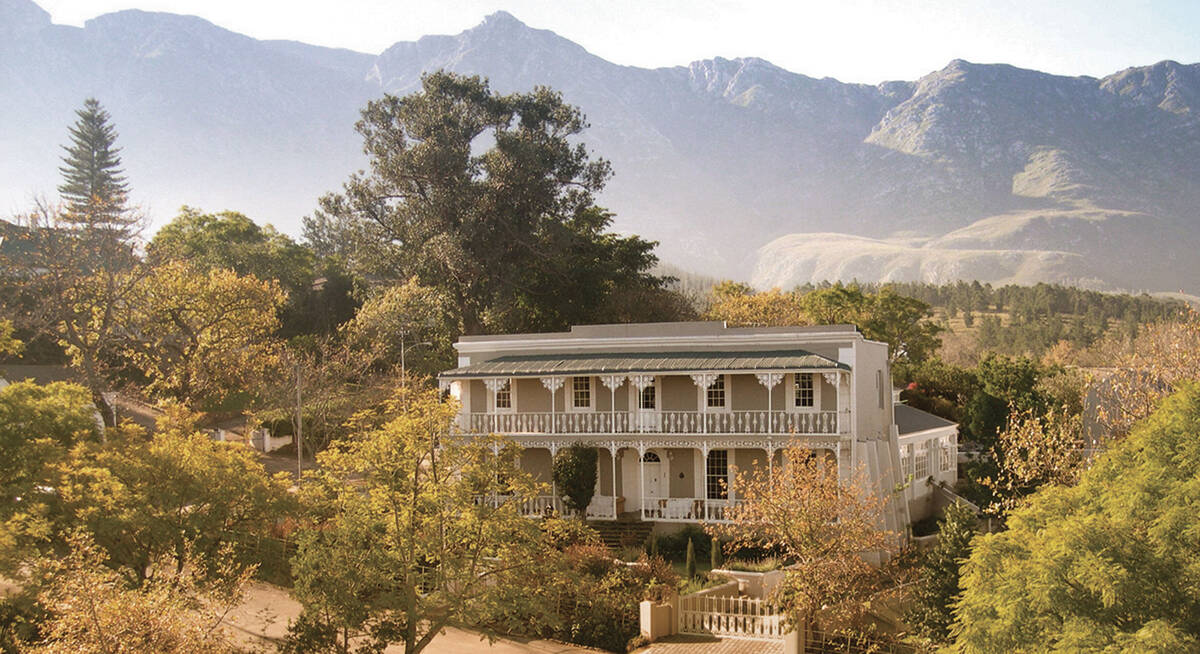
Waterbuck self-drive
12 days • 6 locations
CAPE TOWN AIRPORT TO PORT ELIZABETH AIRPORT
A classic Cape and Garden Route self-drive taken at a leisurely pace and staying in charming boutique hotels. Great food and wine paired with spectacular scenery and an exciting array of activities.
US$2,900 - US$3,120 per person
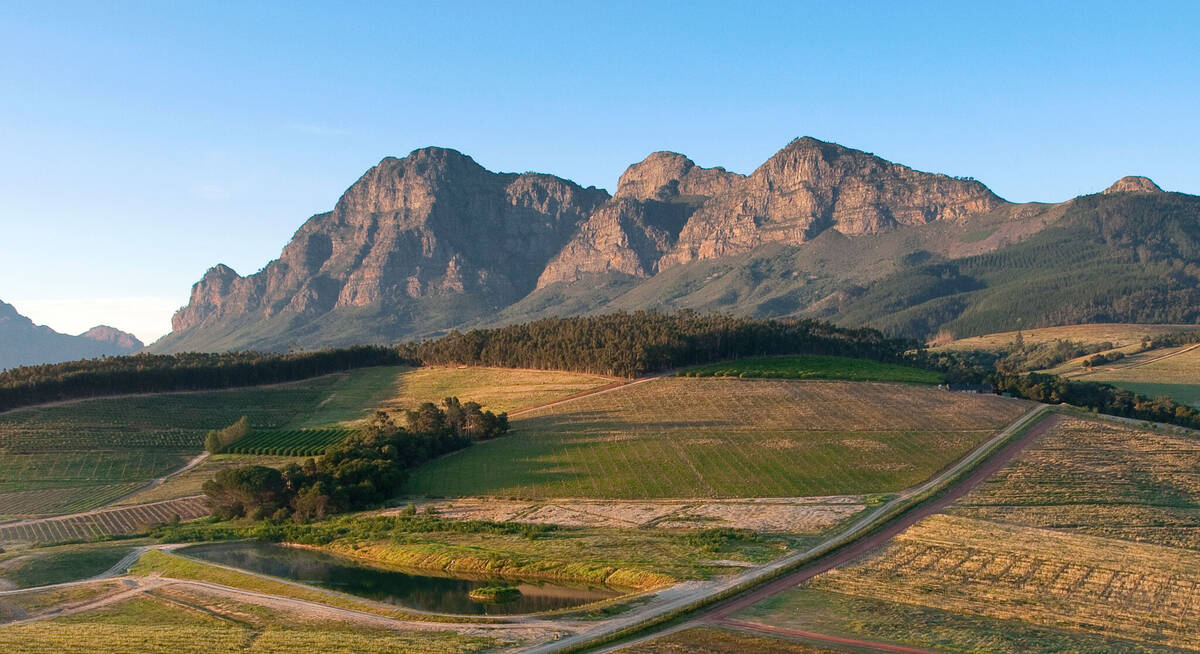
Cape Mountain Zebra Self-drive Safari
12 days • 4 locations
CAPE TOWN AIRPORT TO CAPE TOWN AIRPORT
Fine dining, luxurious accommodation and a wide of range of leisurely activities make this a superbly comfortable self-driven safari. Visit the cosmopolitan Cape Town, tranquil coastal retreats, stylish wine farms and spectacularly peaceful nature reserves.
US$4,400 - US$6,810 per person
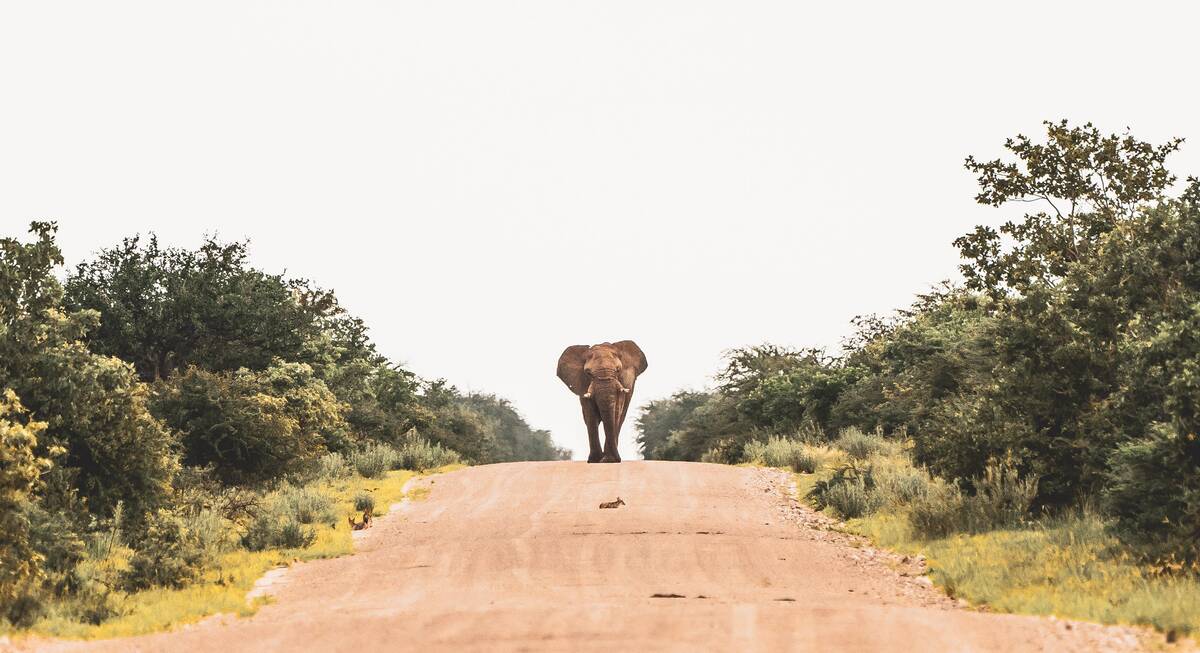
Black Wildebeest Self-drive Safari
19 days • 10 locations
CAPE TOWN AIRPORT TO WINDHOEK AIRPORT
Journey from South Africa’s cosmopolitan Cape Town to central Namibia’s Okonjima Nature Reserve during this self-driven safari. The route passes through a stunning variety of landscapes, offering access to this beautiful continent’s rich diversity.
US$4,030 - US$4,130 per person
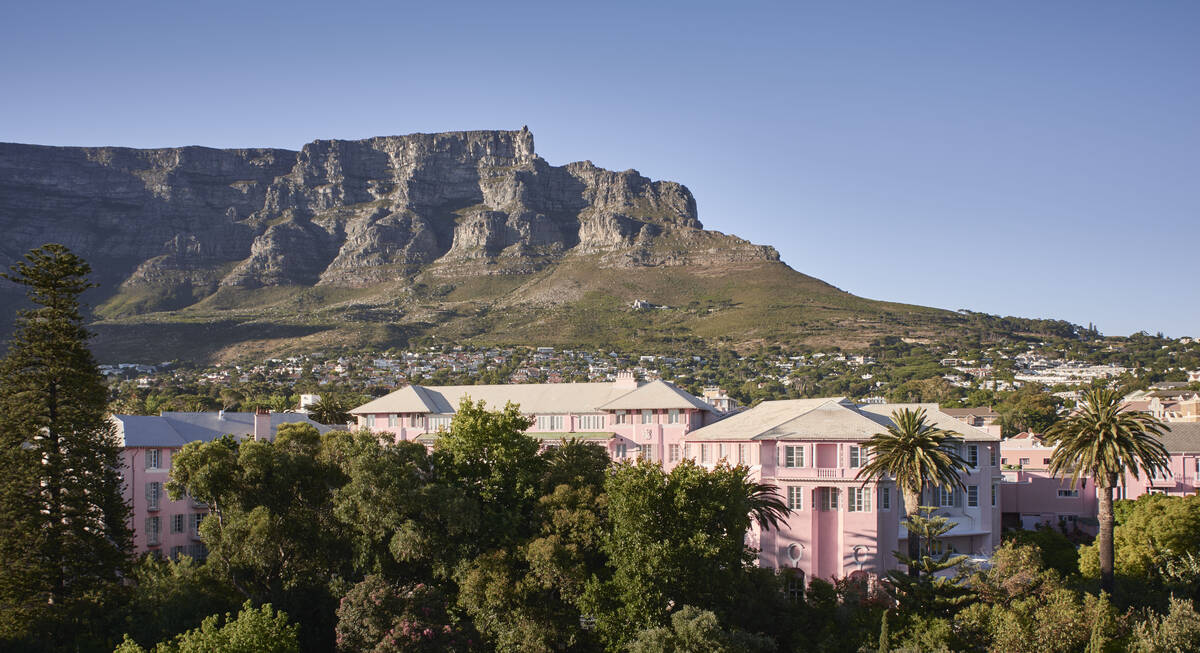
The Highlights of Africa
17 days • 7 locations
CAPE TOWN AIRPORT TO KIGALI AIRPORT
An epic adventure taking in some of Africa’s most incredible sights and wildlife experiences, from Cape Town to the Okavango Delta, Victoria Falls, the Maasai Mara and an encounter with mountain gorillas.
US$16,350 - US$19,750 per person
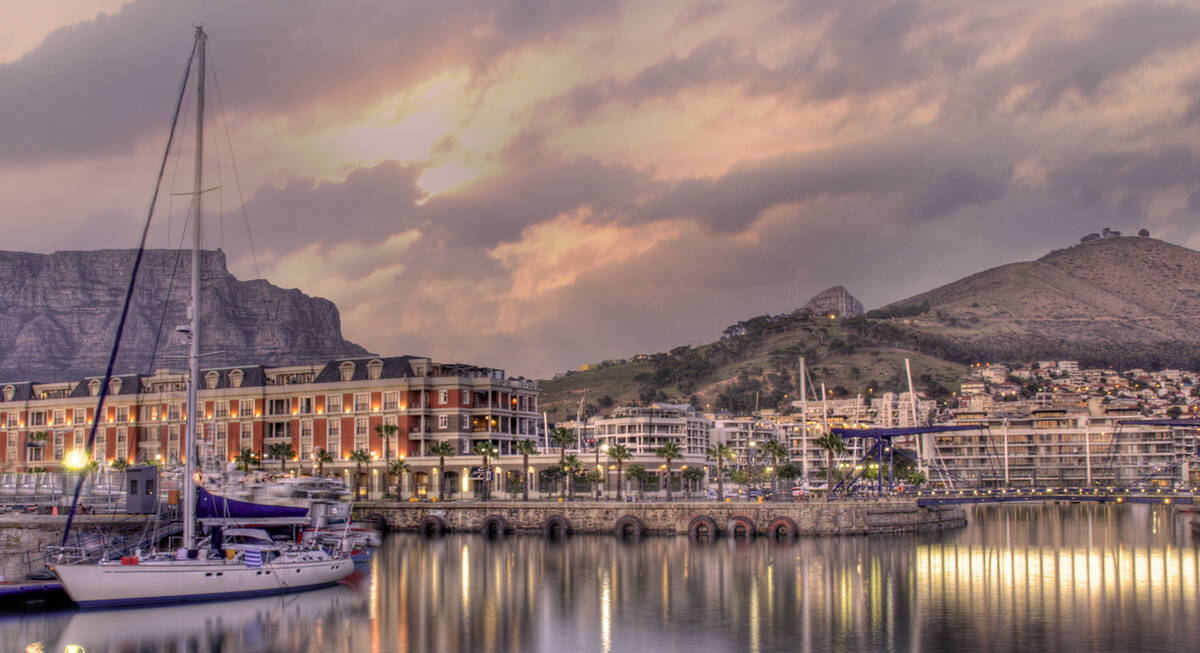
Leopard Safari
13 days • 4 locations
VICTORIA FALLS AIRPORT TO CAPE TOWN AIRPORT
Victoria Falls, Botswana and Cape Town – a classic southern African itinerary combining luxury, wilderness, safari and culture. We can't think of a better way to spend two weeks.
US$14,030 - US$17,920 per person
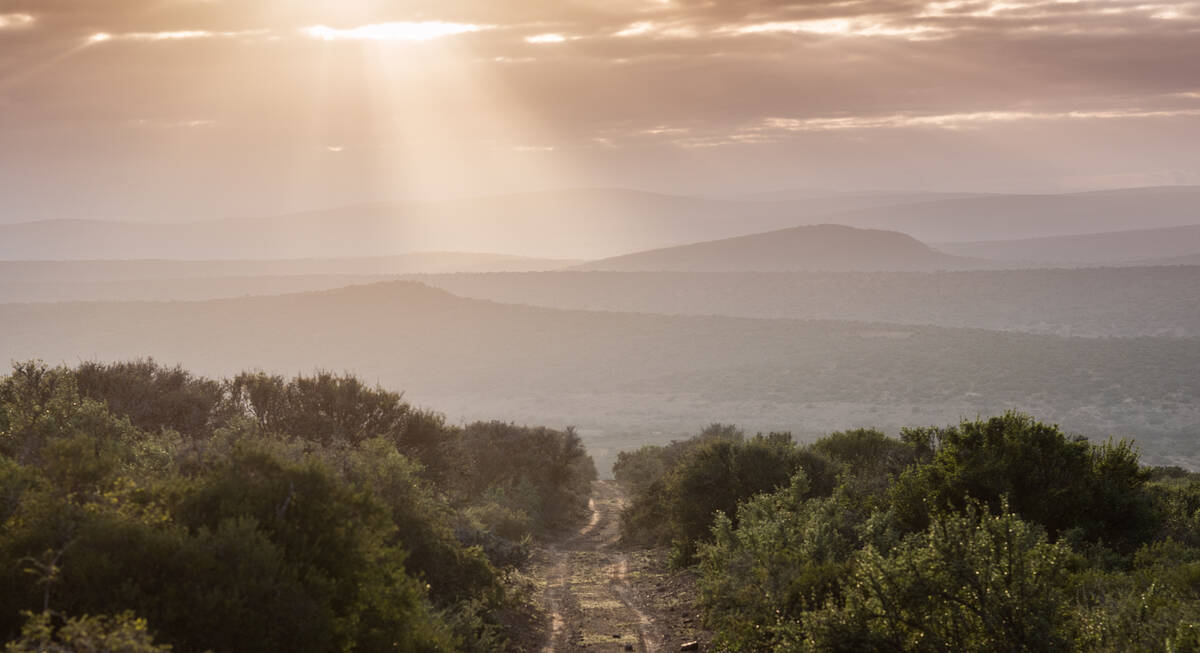
Kwandwe Self-drive Safari
3 days • 1 locations
PORT ELIZABETH AIRPORT TO PORT ELIZABETH AIRPORT
An elegantly stylish lodge that is well suited to families, Kwandwe offers a range of safari activities and the chance to sight all of the "Big 5" during exploration of the Eastern Cape.
US$3,040 - US$4,300 per person
Most recent reviews of our safaris to Samara
Click below to browse all 6 reviews from Samara Karoo Reserve. All from our travellers; all are in full & unedited.
Arrived 25 Sep 2022, 15 nights
"My Sep 2022 trip"
Overall rating: Excellent
Arrived 20 Mar 2017, 12 nights
"Our New Style Africa Holiday"
Overall rating: Excellent
Arrived 30 Jan 2016, 18 nights
"Valentine's at the cricket!"
Overall rating: Excellent
Arrived 14 Oct 2014, 42 nights
"A great six week trip to South Africa"
Overall rating: Excellent
Where to stay in Samara
Our suggestions for safari camps in Samara Karoo Reserve
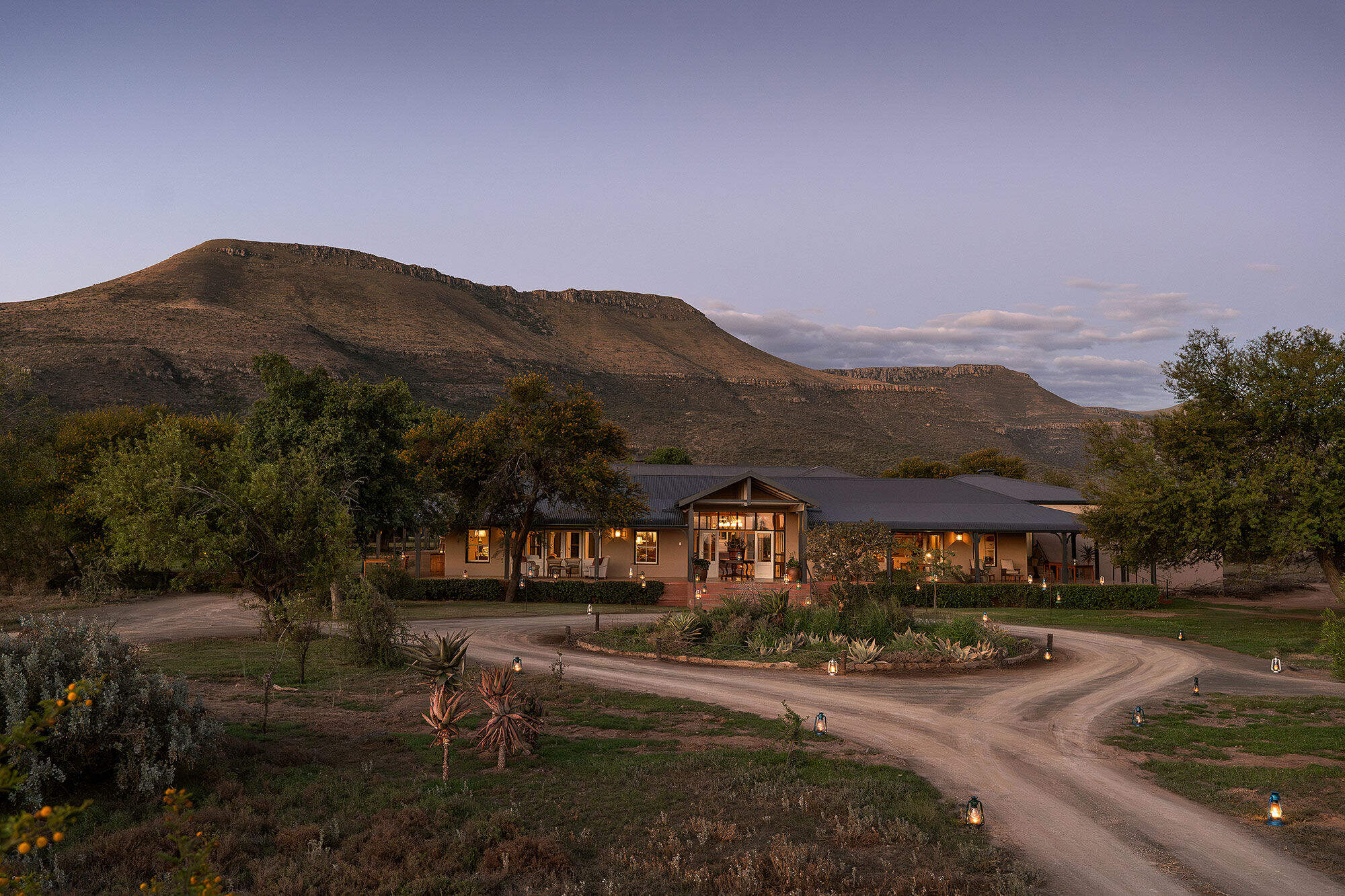
Karoo Lodge
Karoo Lodge is a child-friendly lodge in wide-open plains of the Great Karoo, which offers high-quality food, different kinds of suites and lots of activities.
Our travellers’ wildlife sightings in Samara
This is their success for sightings in Samara Karoo Reserve. Click on a species for more detail. How we work this out.

100% success

100% success

100% success

100% success

100% success

100% success

100% success

100% success

100% success

100% success

100% success

0% success

0% success

0% success
When to go to Samara Karoo Reserve
Our month by month guide: What it's like to visit Samara in South Africa
Jan
Feb
Mar
Apr
May
Jun
Jul
Aug
Sep
Oct
Nov
Dec
South Africa in January
January is considered one of the best months to travel. In Cape Town the weather is hot and generally dry. The Garden Route is also excellent at this time of the year but has a more temperate climate, with slightly lower temperatures and rain can fall at any time of the year. In the Kgalagadi temperatures often top 40°C and short, sharp thunderstorms are also fairly frequent. Wildlife tends to disperse, although birding is excellent.
As this is the high season in the Cape there are numerous events, festivals and outdoor activities to attract visitors. Accommodation books up quickly and it may be necessary to book at least a year in advance. Reservations will often be needed for restaurants and visitor attractions too.
- Hot, largely dry days with clear skies – except on Garden Route
- Wildlife disperses in the Kalahari but birding excellent
- Events, festivals and outdoor activities staged for the high season
- The high season in the Cape, accommodation can cost up to 50% more
- Pre-booking of activities & attractions is essential
Our view
Fantastic: the very best time to visit
Weather in January
South Africa in February
In February conditions are largely the same as in January, although temperatures can be slightly higher, especially in the interior. The wind in Cape Town starts to ease off. Although the Garden Route can experience some rain, the days are pleasantly warm and largely dry.
The Kgalagadi remains very hot, but the birding is still excellent. Wildlife viewing can be tricky especially if there has been some rain, as the resulting long grass can obscure the animals.
For visitors it’s still the high season, but with the local school holidays over and residents back at work, it is less busy than December and January. Accommodation costs remain high and it’s still advisable to pre-book certain activities and restaurants.
- Hot, largely dry days with little cloud
- Wind starts easing in Cape Town
- Slightly less busy than December & January
- Accommodation costs remain high, activities still best pre-booked
Our view
Fantastic: the very best time to visit
Weather in February
South Africa in March
March is still a very good time to visit. Conditions remain dry and very warm in Cape Town, although temperatures start dropping off towards the end of the month. The wind has usually died right down.
The Kalahari remains very hot and in years of good rains vegetation is at its most lush – making wildlife viewing tricky.
Typically, the crowds dwindle, but it can get very busy if Easter falls in March. It is also worth bearing in mind that during major events in March, including the Cape Town Cycle Tour, Cape Epic Mountain Bike Tour, The Cape Town Carnival and the International Jazz Festival, accommodation can get very full.
Attractions remain busy but booking is less essential.
- Temperatures start falling towards the end of the month
- Cape Town hosts a number of world class sport and cultural events
- Wildlife in the Kgalagadi disperses, game viewing more challenging
- Crowds diminish as the high season comes to an end
- Accommodation can get busy during major events
Our view
Fantastic: the very best time to visit
Weather in March
South Africa in April
April is South Africa’s “shoulder” season and is often the most pleasant. Not too hot, not too cold, some rain but not masses. In Cape Town and along the Garden Route days are usually sunny, warm, windless and largely dry, although in Cape Town the chance of rain increases from the end of the month.
In the Kgalagadi the rainy season is typically over and migratory birds are starting to make their journey back up North. Vegetation remains lush but wildlife viewing starts picking up towards the end of the month.
The region is still relatively busy (especially of its still Easter) but it gets quieter towards the end of the month thus availability improves. Accommodation rates start to decrease, and it becomes less important to book restaurants and attractions in advance.
- Temperatures still warm and very pleasant, with little wind.
- Rain starts easing in the Kalahari and migratory birds start to depart
- Less busy, especially towards the end of the month - busy over Easter
- Accommodation frees up and prices start to come down
Our view
A very good time to visit
Weather in April
South Africa in May
May marks the start of the dry season in the Kgalagadi. Days are warm and dry with almost zero rainfall. Night-time/early-morning temperatures can drop towards 0°C. Wildlife viewing is at its peak as animals concentrate around the few remaining water sources.
Days can still be warm and sunny in Cape Town and on the Garden Route, but the weather becomes a lot more variable. May heralds the start of the rainy season in Cape Town and the winelands. Night-time temperatures rarely drop below 10 degrees in the coastal areas.
With far fewer tourists, accommodation prices are at their lowest. There is rarely any need to pre-book activities, but reservations are still advisable at some of the top restaurants.
- Higher chance of rain in Cape Town & the Winelands
- Day time temperatures drop significantly
- Wildlife viewing peaks in the Kgalagadi
- Low season so rarely busy & very few crowds
- Low season rates at the hotels & lodges
Our view
A good time to visit, with pros & cons
Weather in May
South Africa in June
Winter is now in full swing. Maximum temperatures in Cape Town rarely reach 20°C and the rainy season is well under way. Outdoor activities therefore become limited, but a number of high-quality indoor events are organised.
The Garden Route has, in general milder weather and less rain than Cape Town.
June sees the arrival of the first whales which migrate to the South African coastline to give birth.
In the Kgalagadi, daytime temperatures are warm but nights and early mornings are bitterly cold. Wildlife viewing is excellent as animals are drawn to the few remaining permanent water points.
Overall tourist numbers are at their lowest, as are the costs of flights and accommodation.
- Cold & wet weather in Cape Town, Kgalagadi warm days but cold at night
- One of the best months for wildlife viewing in the Kgalagadi
- Whales start arriving to have their calves
- Low visitor numbers & no crowds
- Accommodation & flight prices remain low
Our view
A good time to visit, with pros & cons
Weather in June
South Africa in July
The winter weather continues with very cold nights and early mornings in the Kgalagadi and virtually no rainfall. Vegetation here is really thinning out now and water even more scarce – so wildlife is easy to spot.
Despite the winter and local school holidays, Cape Town remains a great place to visit. On a wet and cold day, the Two Oceans Aquarium, Zeitz Mocca (art museum) and the Cape Town Comedy Club all make for great days out, as does a trip to the wine country or the annual Oyster Festival at Knysna.
By mid-July most of the whales have arrived to give birth. Hermanus is the best place to see them.
At the height of the low season, so accommodation and flight prices remain low.
- Generally cold & wet in the Cape, but good quality indoor events
- Very good wildlife viewing in the Kgalagadi
- Oyster festival in Knysna
- Local school holidays can make places a little busier than usual
- Accommodation and flight prices remain low
Our view
A good time to visit, with pros & cons
Weather in July
South Africa in August
While August experiences mostly wintry weather it does mark the very beginning of spring with temperatures starting to rise. Visitors are drawn to the West Coast and Namaqualand to see the wildflowers, which start blooming in late August and can be seen until mid-September. Whales are still in abundance now too.
The Kgalagadi is now very dry and wildlife vieiwng is still good. Temperatures start climbing towards the end of the month.
Despite the weather , visitor numbers can be high as the northern hemisphere schools close for their summer holidays. It may be a good idea to book certain attractions and restaurants in advance.
Simlarly, although accommodation prices are still low, flight prices can be a little higher than in previous months.
- Temperatures start rising – but still potential for cold & wet weather
- Wildflowers on the West Coast & in Namaqualand
- Good wildlife viewing in the Kgalagadi
- Whales continue to attract visitors
- Can get busy due to northern hemisphere school summer holidays
Our view
A good time to visit, with pros & cons
Weather in August
South Africa in September
Good wildlife viewing in the Kgalagadi continues and daytime temperatures increase quite dramatically. Mornings and evenings are still on the chilly side, but not as cold as they are in June, July and August.
The 1st of September is officially the start of spring in Cape Town. Days become warmer but not quite warm enough to enjoy the city’s beautiful beaches. Venues all over Cape Town play host to various artists during the Cape Town Fringe Festival.
Rainy days are fewer, but night times can still get chilly. Many hotels are still charging low season rates making September great value for money.
Elsewhere, Hermanus hosts the popular annual Whale Festival, and in the West of the Cape, wildflowers continue to bloom until the middle of the month.
- The start of spring; temperatures start rising
- Whale festival in Hermanus
- Cape Town Fringe Ferstival attracts a wide range of artists
- Wildflowers blooming well until the middle of the month
- Good wildlife viewing continues in the Kgalagadi
Our view
A very good time to visit
Weather in September
South Africa in October
The weather starts warming up nicely, Cape Town experiences pleasant days, with much less rain, nights can still be quite cool, but not cold. Some days are now warm enough to enjoy the beach. This is one of the best months to visit the Cape Region.
October is one of the hottest months in the Kalahari. Water remains very scarce, so the wildlife viewing is still very good. Towards the end of the month the odd spectacular thunderstorm is possible with much lightning and thunder. Migratory birds start to arrive, and resident species gear up for the breeding season.
The whales are still present with Hermanus and False Bay the best places to see them.
- Days start warming up; fewer rainy days in Cape Town
- Very hot in the Kalahari – thunderstorms season starts
- Migratory birds start arriving & resident birds start breeding
- Whale watching still excellent in Hermanus and False Bay areas
- Start of the high season, getting busy and accommodation prices rise
Our view
A very good time to visit
Weather in October
South Africa in November
By November Cape Town is experiencing summer conditions with hot, clear days and warm, pleasant evenings. It’s a great month to enjoy the beaches before the peak holiday season in December. There are no real downsides to visiting in November and you may even get a few accommodation specials before prices go up for the festive season. Kirstenbosch Botanical Gardens begins their summer outdoor concerts with local and international artists performing.
The Kgalagadi remains hot but thunderstorms are a bit more regular. With the rains, water sources become more plentiful and wildlife disperses but this is when herbivores such as Springbok start lambing. Photography improves as conditions become less hazy.
This is the last month for regular whale sightings – they tend to migrate back down south by early December.
- Summer now in full swing, with temperatures often reaching 30°C
- Rainy days scarce; evenings warm & very pleasant
- Antelope start lambing in the Kgalagadi; wildlife generally dispersed
- Last month for regular whale sightings
- Good time to visit Cape Town before the peak holiday season
Our view
Fantastic: the very best time to visit
Weather in November
South Africa in December
December is usually Cape Town’s hottest month when temperatures frequently breach 30°C. You can expect hot and cloudless days, and almost no rain but December does see the occasional very windy day.
The Kalahari is still hot, but temperatures are not quite as high as previous months. With the rainfall the bush transforms into various shades of green. Wildlife disperses as water become more widely available.
The Garden Route enjoys warm to hot days with rain at any time but usually not over an extended period.
Mid to late December becomes incredibly busy with concerts, festivals and various outdoor activities in Cape Town. Hotel prices rise, tourist attractions and beaches are crowded and most popular sites and restaurants need to be booked in advance.
- Long, hot sunny days
- Kgalagadi bursts into life as rainy season kicks in
- Wildlife viewing a bit trickier as wildlife disperses
- Cape Town buzzing with concerts, events, festivals etc
- Peak season: attractions get very busy & accommodation costs rise
Our view
Fantastic: the very best time to visit
Weather in December
Samara Karoo Reserve: In detail
Samara Karoo Reserve
Samara Karoo Reserve is one of the larger game reserves in South Africa’s Eastern Cape and is located about three hours' drive north of Port Elizabeth.
Samara stretches about 280km² on the wide-open plains of the Great Karoo. It’s a malaria-free reserve (often requested by families with small children), hugging a scenic valley, with mountains and three river systems.
Samara is home to a variety of plant and animal species, some endangered, including cheetahs, blue cranes and the Cape mountain zebras. The general lack of most dangerous game makes the reserve a good bet for families.
Topography and climate of Samara
Being quite a long way north of the Cape’s coastal strip – Samara’s climate doesn’t follow the typical pattern of the southern Cape. Its pattern is more typical of the rest of the subcontinent. This means that its summer the days (Nov-Feb) tend to be hot, and clouds will build up – often culminating in a late-afternoon thunderstorm. Whilst in winter, the weather (May-Sept) is often mild and sunny, with no hint of rain. However, the mountains will often get a little more rain, and even snow on occasions.
Flora and fauna in Samara Reserve
Samara’s birdlife is varied – 220 species of birds have been seen here – although our own experience is that the birdlife isn’t dense and keen birdwatchers will need to work hard to count a good number of species.
Specials at Samara include the large flocks of endangered, and very stately, blue cranes which are found here, especially during the winter (May-Sept); black eagles which breed here; and, surprising for the Karoo, African black ducks in the river. On our most recent visit, we also had a good sighting of an African hoopoe – as well as kori bustards, secretary birds, a handful of raptors and some ant-eating chats.
Mammals in Samara Game Reserve
Black rhino and white rhino are both found on Samara Reserve, and on our last visit a helicopter team was busy fitting tracking devices to some of the white rhinos – so in the future these may well be be easier for visitors to locate.
Meerkats and bat-eared foxes are both cute and of great interest to some visitors. Similarly, the largely nocturnal aardvark occur on Samara, and there's a lot of anecdotal evidence to suggest that aardvark densities here are particularly high. Though usually retiring and reclusive, Samara's aardvarks seem more relaxed than most – or at least are seen more than most. It's likely that this is due to the absence of their natural enemies – lion and spotted hyena – but whatever the reason, it does mean that Samara attracts a number of visitors who are very keen to head out of night drives with the aim of seeing these elusive animals.
Conserving cheetahs in Samara Reserve
Samara works closely with the Endangered Wildlife Trust to protect cheetahs. After being savagely treated in captivity, a wild cheetah, Sibella, was rescued and was released into Samara in 2003 along with two males. These bred very well, and with no competing predators many of the offspring survived. Most have now been sent outside the reserve to other reserves and breeding programmes.
What to do and see: activities in Samara reserve
In many ways, the animals which most interest visitors on Samara are the cheetah – one of which is collared with a radio collar. This can be tracked and located and, because they’re relatively habituated to people, approached to within 5-6m by adults on foot. On our most recent visit here, we thought that walking up to within 6m of three adult cheetah was a really magical experience – even if we’d located them with the help of a radio-collar!
Night drives also possible if you’re keen to see aardvarks – but best to flag up that you’ll want these in advance if they’re important to you. And you might need to accept, as we did, that you may not see aardvark; we didn’t!
Our most recent experience here, in April 2014, was a generally good one. We felt that the reserve’s ambience of peace gave it a credible wilderness feeling, and the contrast between the plains and the plateau drive was very welcome. The drive that we took onto the plateau was a real adventure – with good herds of gemsbok and Cape mountain zebra at the end of it, as well as spectacular views. Our cheetah-tracking was also a highlight and we really enjoyed walking up to one of the herds of giraffe.
That said, Samara Reserve’s general game densities seemed very low to us; and without lion, spotted hyena or any real possibility of leopard sightings, we’re very aware that some travellers may be put off even coming to Samara. This is a shame as it does have a real wilderness feel. In fact, Samara should naturally be a strong contender for families with younger children precisely because of the lack of most dangerous game species.
Map of Samara Karoo Reserve
Choices for where to stay in Samara Karoo Reserve
Best lodge to stay at in Samara Karoo Reserve

Karoo Lodge
Karoo Lodge is a child-friendly lodge in wide-open plains of the Great Karoo, which offers high-quality food, different kinds of suites and lots of activities.

Looking for inspiration on where to travel next?
Visit our trip chooser to explore your options and find inspiration for your perfect African adventure
Inspire me
